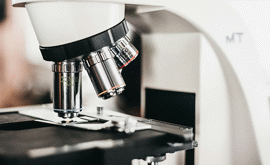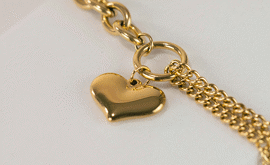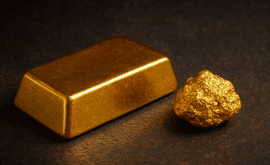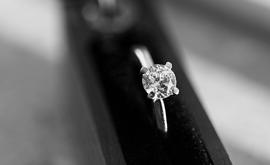Does Gold Tarnish or Rust? Here's What You Should Know
Does pure gold tarnish?
One of the things that make gold so special is that, in its pure form (24 carat), it does not tarnish. Gold is considered to be a ‘noble metal’ meaning it is highly resistant to oxidation and chemical reactions, which is why when gold artefacts from ancient civilisations are discovered, they are often still in remarkably good condition even after thousands of years.
However, some gold items like jewellery and coins are not always made from pure 24ct gold. As pure gold is a soft metal, many gold bullion coins like Sovereigns, Eagles, and Krugerrands are struck in 22ct (91.67%) gold, with the remainder of the item made up of other metals such as silver, copper, or zinc to increase its strength and durability. It is these alloy metals within the gold items that can react with the environment causing slight discolouration, spotting, or dulling on the surface over time.
Does pure gold rust?
Rust is formed when a metal reacts with water or oxygen. As pure gold is nonreactive to these factors, it does not rust. However, some gold bullion coins are struck in 91.67% (22ct) gold, with the remainder made up of other metals to improve the durability of the coin. As some of the other metals alloyed with the gold can be more susceptible to rust or tarnish, these coins can occasionally develop tiny red rust spots.
Even high-purity gold items, such as gold coins and bars made in 999.9 fine gold (24ct) can sometimes develop tiny red spots. Again, these tiny rust spots are not caused by the gold itself but by the other trace metals that are present. Very occasionally, microscopic particles of other metals may reach the surface of a gold coin when it is struck, and when exposed to oxygen or moisture, they can oxidise and create a reddish mark.
While these rust spots can slightly affect the visual appeal of a gold coin or bar, they do not damage the gold or reduce its purity.
What can cause gold to lose its shine?
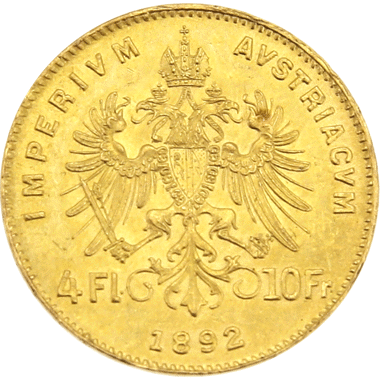
Although pure gold will remain untarnished and without rust, there are some environmental and external factors that can affect the appearance of gold alloys, including:
- Exposure to air and moisture: Oxygen and humidity can interact with copper or silver in an alloy, causing mild surface tarnishing.
- Chemicals: Contact with substances such as cleaning agents, chlorine, perfumes, and lotions can dull the surface of gold items or leave residues.
- Skin and body oils: Regular handling and wear can expose gold to sweat and natural oils which can create a thin film over time.
- Storage conditions: High humidity or contact with chemicals can accelerate tarnish or rust on alloyed surfaces.
It is worth noting that, for gold bullion coins and bars, tarnish or rust may show up as minor surface changes but will not affect the actual purity or weight of the precious metal itself so should have no impact on the value of the gold.
How to prevent gold tarnishing
Taking care of gold is straightforward, yet there are a few simple practices that can help to maintain its shine for longer:
- Ensure proper storage: Store gold coins, bars, and jewellery in dry, airtight cases or protective capsules and tubes to minimise their exposure to air and moisture.
- Avoid contact with chemicals and oils: Remove gold jewellery before using cleaning products, swimming, or exercising.
- Limit handling: Use cotton gloves when handling coins or bars to help to preserve their finish.
Does tarnish or rust affect gold’s value?
When it comes to gold bullion coins and bars, tarnish, rust, or surface discolouration does not impact their intrinsic gold content or purity, and should therefore not affect their value. The weight and metal content remain unchanged, and bullion is primarily valued by its gold content rather than its appearance.
On occasion, some collectors may prefer coins in pristine condition, especially with rare gold proof coins where presentation can play a role. However, for standard bullion investors, minor tarnishing or red spots can be considered normal and do not reduce the underlying value of the gold itself.
In conclusion
Gold is one of the most enduring metals in existence. While pure gold itself does not rust or tarnish, some alloys containing copper or silver can develop some surface changes if exposed to moisture or chemicals.
However, this should not affect the value of gold bullion bars and coins, and with proper storage and care, these effects are easily minimised. Whether you hold gold as gold coins, bullion bars, or jewellery, keeping it protected can ensure it can keep its brilliance for generations.
This blog represents one person’s opinion only. Please note, gold and silver prices may go down as well as up. Atkinsons Bullion & Coins accepts no responsibility for any losses based on information we have provided. We do not offer investment advice. Please carry out your own research before making an investment decision.
.png)
